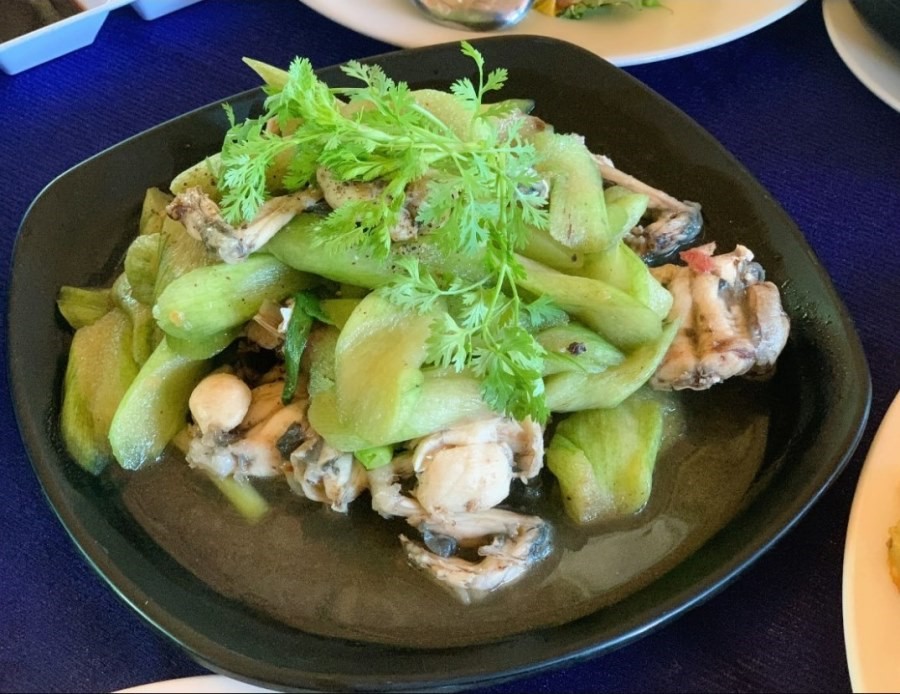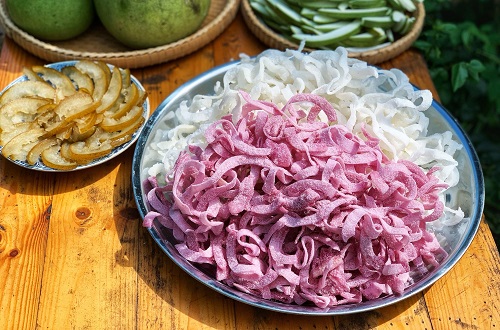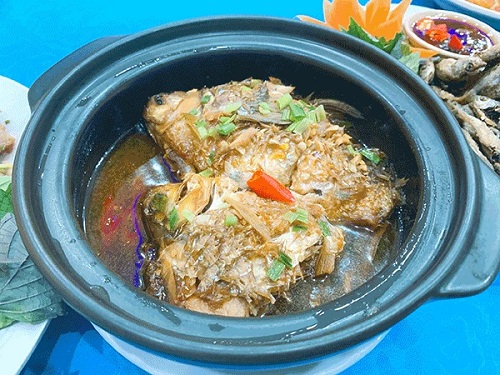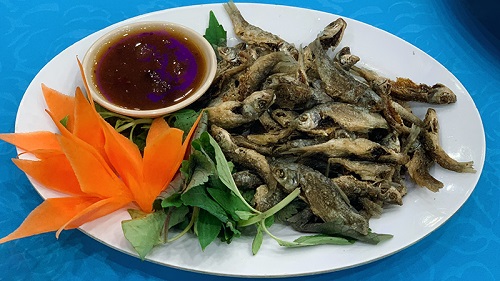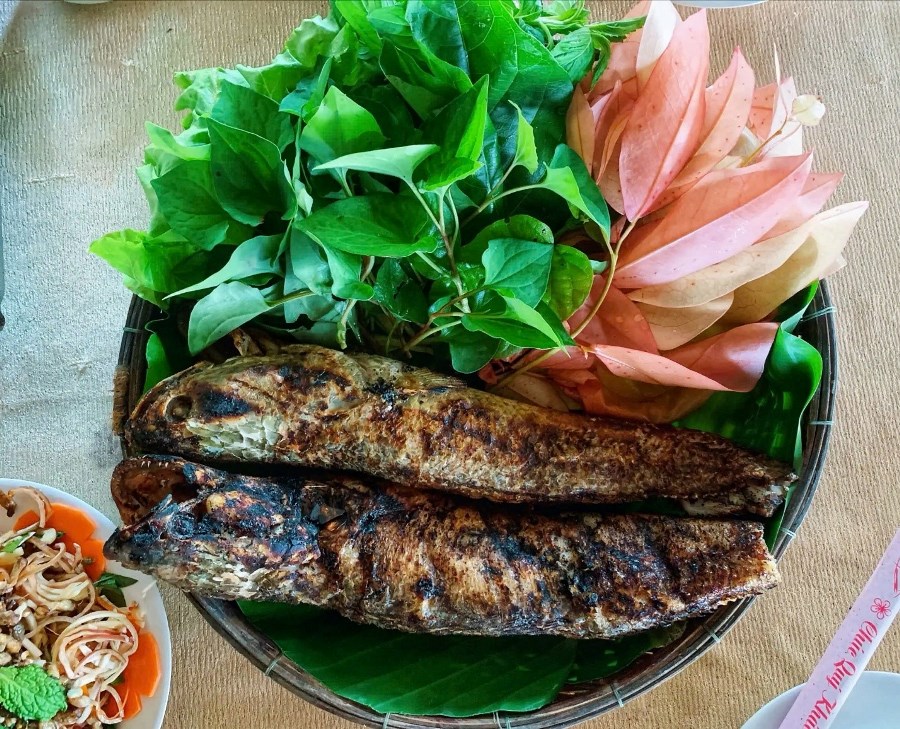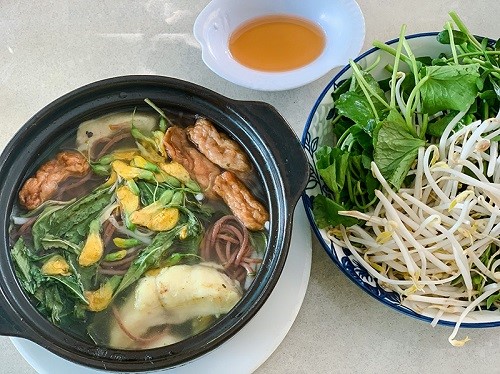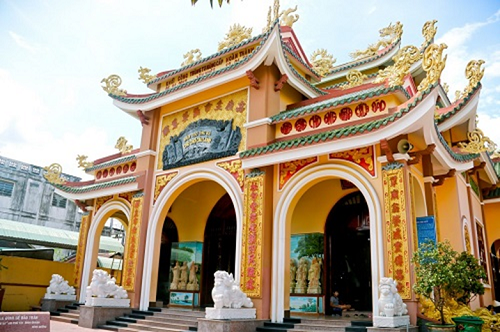
Natural features contribute to shaping the specific characteristics
“The results of archeology show that about 4000 to 2500 years ago, humans were present in the Southern region, and the range of residence and activities of that first class of inhabitants covered a large geographical area, with different densities of residence. The most densely populated area at that time was not the Mekong Delta (new alluvial area) but the highland (ancient alluvial area), i.e the Southeast region. While in the highlands - the Southeast region - the population at that time had a fairly dense population density, in the Mekong Delta so far, archeology has not found the true residence vestiges of this first class of people” (1). Until the first AD centuries, the Southwest region was gradually built into the brilliant urban area of Oc Eo - Ba The port. After that, due to many impacts of natural phenomena such as retrograding shoreline, sea regression; social problems, war, then for a long time, this land became desolate. In that situation, from the 17th century, the Vietnamese in the North and North Central regions, one by one, waded through the forest to come here to reclaim land according to the policy of the feudal state or migrate by themselves...
In the Southwest region in the XVII and XVIII centuries, the Vietnamese, Khmer, Chinese, and Cham people - in which most of them were Vietnamese with thousands of years of experience in wet rice cultivation, supported each other to promote large-scale reclamation work in the Mekong Delta. Since then, the landscape of this region gradually changed: densely populated villages, fertile fields, many towns, and population centers were established (2).
The people who came to explore this land were mainly farmers because of circumstances that forced them to leave their homeland and villages. Therefore, they still have the Vietnamese characteristics which were formed in the process of building and defending the country. However, the new land has its own characteristics in terms of natural conditions and social relations; therefore, their personality, way of life, and habits have peculiarities arising in the process of migrating and earning a living and were passed on to their descendants (3). That is courage, bravery, resistance, rebellion, little submission to feudal authority, and the thinking of "who knows who is on the top". These are also people who have a sense of risk, dare to accept danger, are people who are forced to take risks, so they consider life as light as a feather, like to live recklessly, always show courage, not afraid of dangers and difficulties, have high spirit of solidarity, love of righteousness, esteemed friendship, brotherhood, philanthropy, contempt for money, ready to sacrifice himself for the cause. Because they also understand the extremes, humiliation, hunger, and cold, they also have other valuable quality such as being very hospitable, willing to give rice, and share many things generously; speaking frankly, do not like over-polished manners. This is also a way of life, a long-standing custom of the people of this region (4).
To the novelty in material and spiritual culture
The novelty affects almost every aspect of how people eat and wear. At first, when they arrived in this land because the ingredients used to prepare the dishes were unfamiliar, they were forced to eat whatever they met, then they gradually adapted and shaped the dishes. That is the basis for the formation of new dishes, such as sour soup with fish and common sesban flowers, salted sesarma mederi, grilled snakehead fish… then Sim Lo sour soup, Bo Hoc fermented fish, etc. thanks to exchanges with the Khmer community. Other dishes originating from the countryside are reprocessed to suit new circumstances, such as Vietnamese crispy pancakes and cylindric glutinous rice cake (filled with green bean paste and fat pork).
Regarding housing, the newly discovered land then still faced many difficulties due to weather, climate, mosquitoes, and snakes, but it was clear that this place rarely encountered extreme natural phenomena like other regions across the country. In the past, the Southwest was also considered a place where the land was wide but there were not many inhabitants, so the houses here were often larger and more open than in other places. The remaining ancient houses today are in Can Tho, Ben Tre, Tien Giang, Dong Thap, etc. which are proofs of this.

In the process of development, the Southern people have more new festivals to meet the needs of culture and entertainment. In the photo: Southern Folk Cake Festival in Can Tho City. Photo: DUY KHOI
Regarding costumes, since Lord Nguyen took control of this land, many dress reform policies were introduced; to create a difference in clothing between the North and the South. Gradually, due to the characteristics of the climate and weather, when people move to the South, they need more durable and convenient clothes. Along with cultural exchanges with other ethnic groups, many new costumes appeared. Ba Ba shirt (a kind of shirt used by Southern Vietnamese people, or loose-fitting blouse) and Ran bandana (plaid bandana) were products of that cultural exchange process. At the same time, this was also a type of clothing that was well adapted to the weather and climate of this region.
Because it is a new land, there are almost no cultural sediments here. For the most part, the customs here were brought in from abroad by nomads and modified to suit the new land. The folk festival of the Vietnamese people in this region is a typical example, showing clearly in the history of formation, the density of festivals, and also in their rituals.
If the traditional festivals of the Vietnamese people in the North mostly originate from the ancient history of the nation such as the Hung Temple festival, the Phu Dong festival, the Kiep Bac Temple festival, etc., then in the South, most of the festivals that are still in existence today were born at a much later stage. There are festivals with the age of less than a century, there are festivals that last for several centuries, but generally do not exceed 300 years, corresponding to the history of the Vietnamese people who came to explore, cultivate, establish villages, and build communal houses or set up markets, etc. The festival both inherits the long-standing spiritual and cultural heritages of the original homeland while promoting and receiving new factors from real life, creating new ways of living, and new culture to meet the needs of the community in the new land. Sometimes, along the way, exiles have adopted new beliefs and new customs.
The density of folk festivals in this region is also less than in the North. In addition, because this is a new land, the accretion and deposition culture here is not as thick, not as many layers as in the Northern Delta. Therefore, the festival content in the South is often somewhat simpler than in the North. In addition, due to the coexistence conditions among Vietnamese, Chinese, Khmer, and Cham people living in the same area of residence for many generations, the phenomenon of penetration, interweaving, and mixing is inevitable among cultures. This can be easily recognized through worship, folk beliefs, as well as in the rituals of many festivals (5).
In particular, in the field of folklore, a clear reflection of the novelty of this land is folk tales about the reclamation work in the new land. These are stories about tigers, crocodiles, God of water, forest ghosts... such as: "Mr. Ca Cop", "Tang An fights a tiger", "Mr. Nam Cheo", "Ghost Ho Giao". Such stories are rarely found in the land of origin; but conversely, there are no myths, legends, or stories about the time of the founding of the land or the process of national formation.
Thus, it can be said that novelty is one of the outstanding features of the Southwest cultural region. This feature appears in most of the cultural elements in this area, helping the regional culture to have its own characteristics.
Source: Can Tho News - Translated by Hoang Dat







